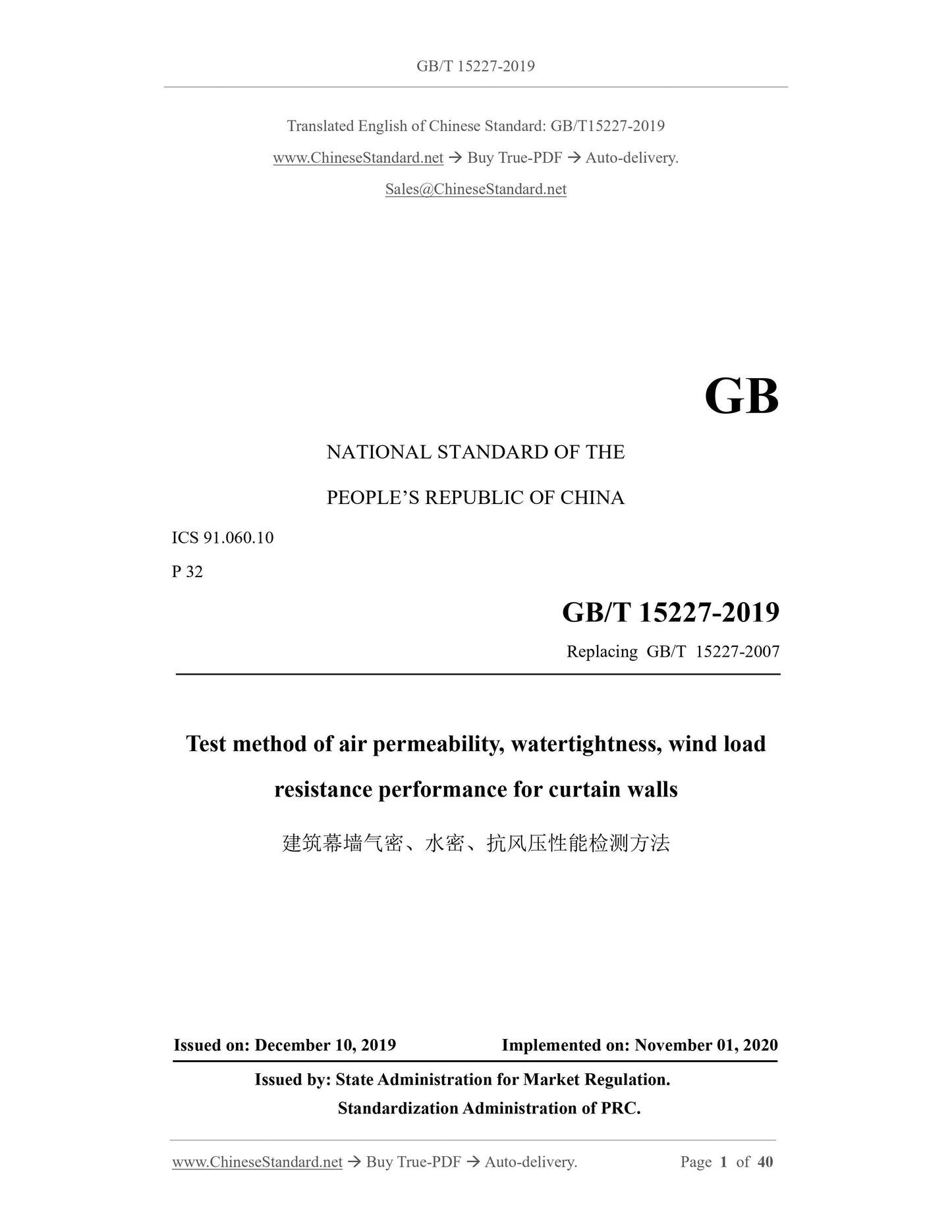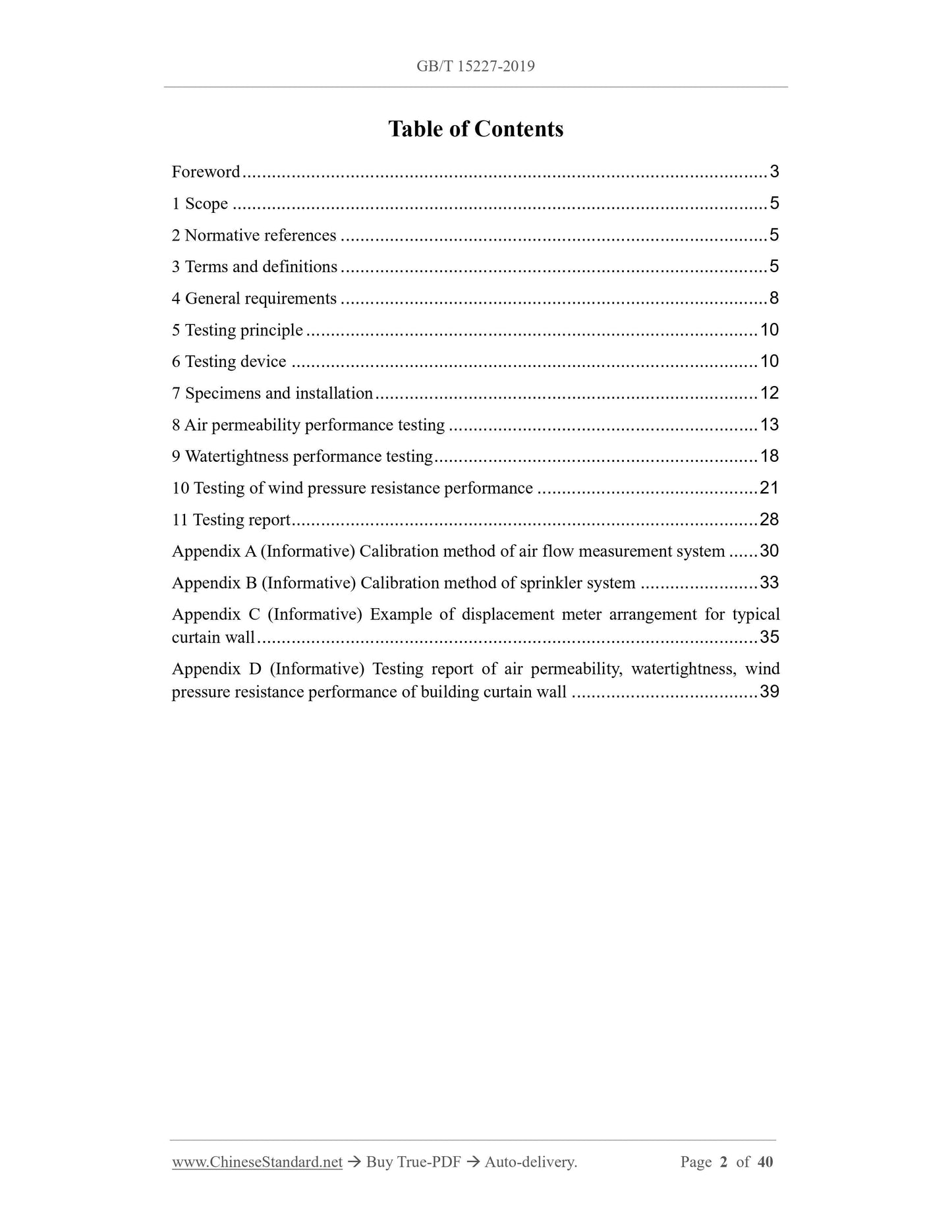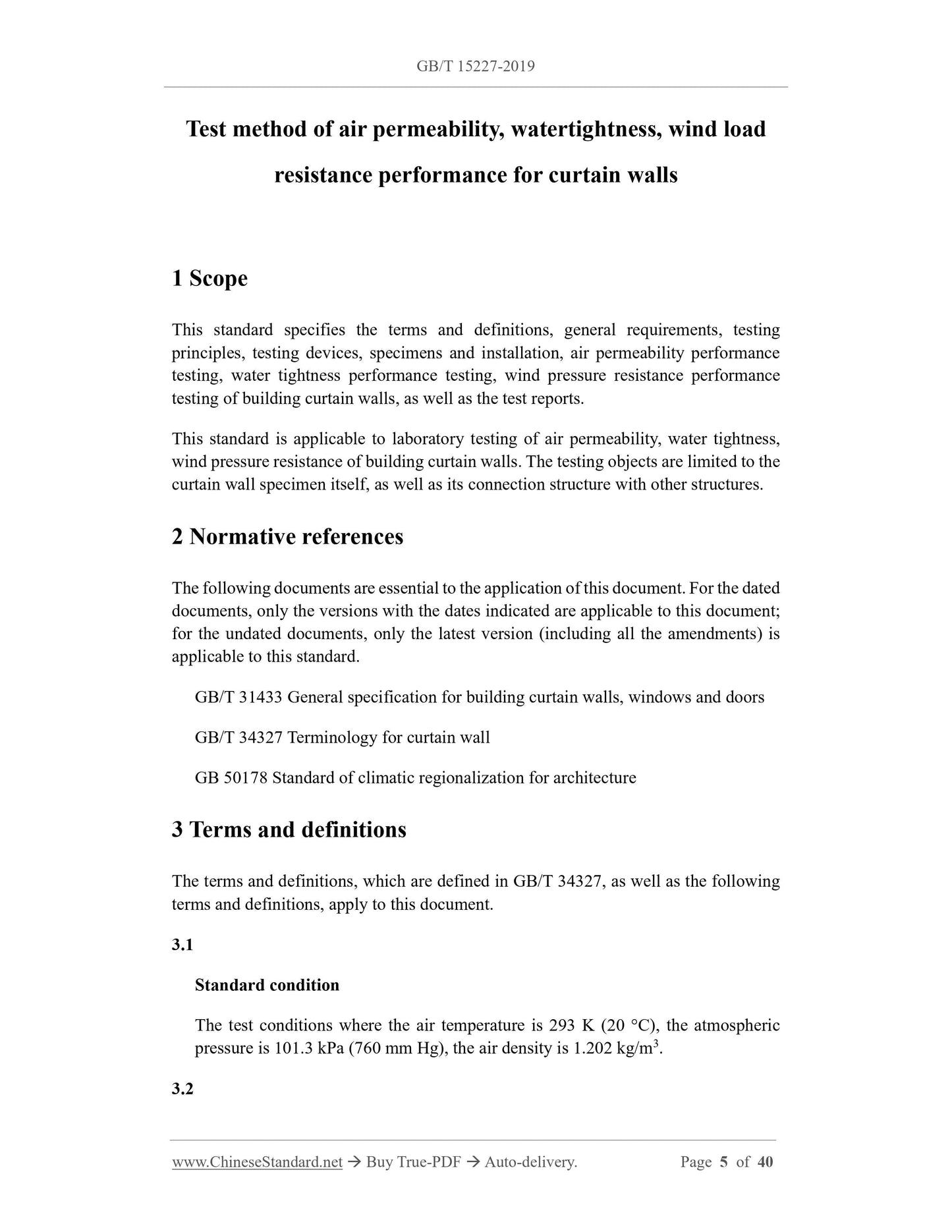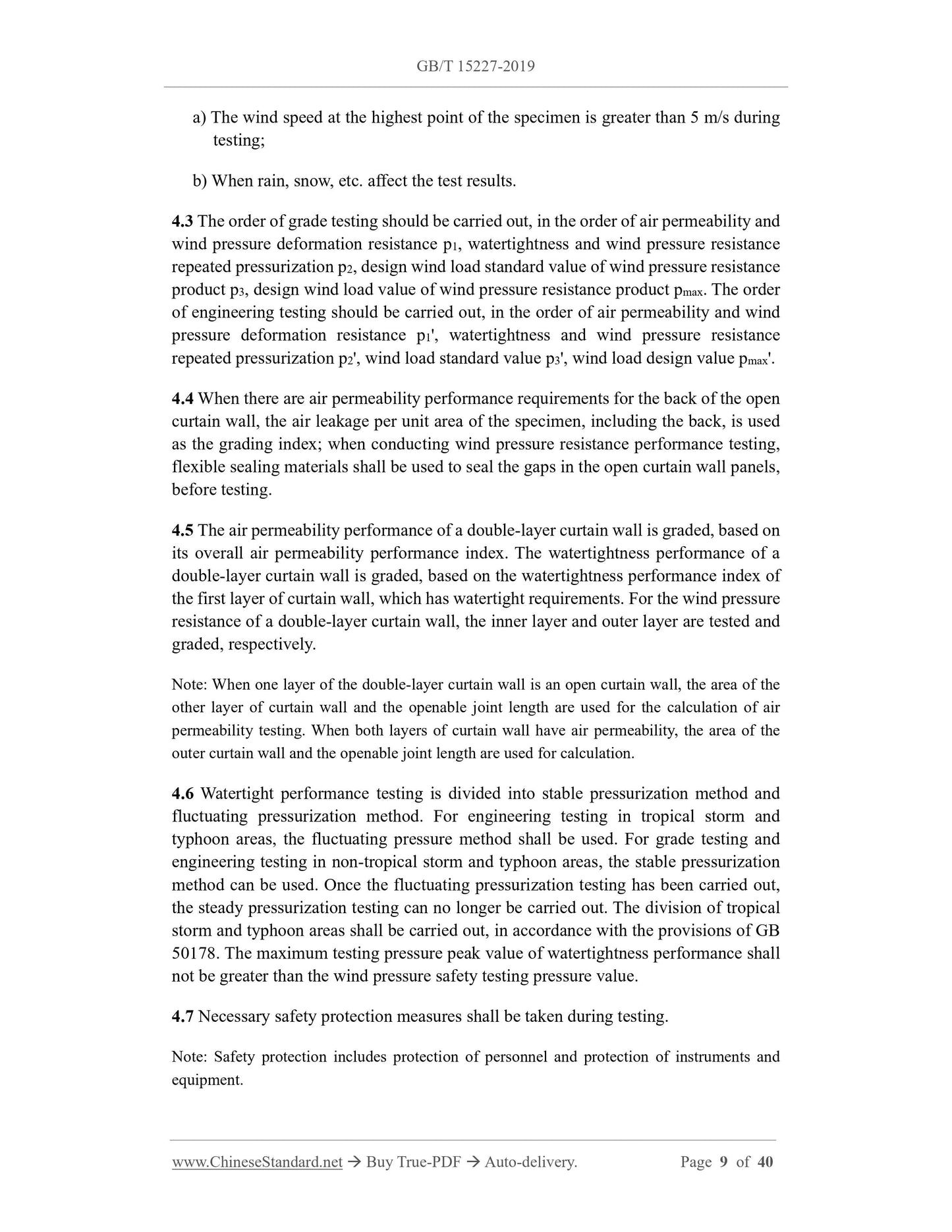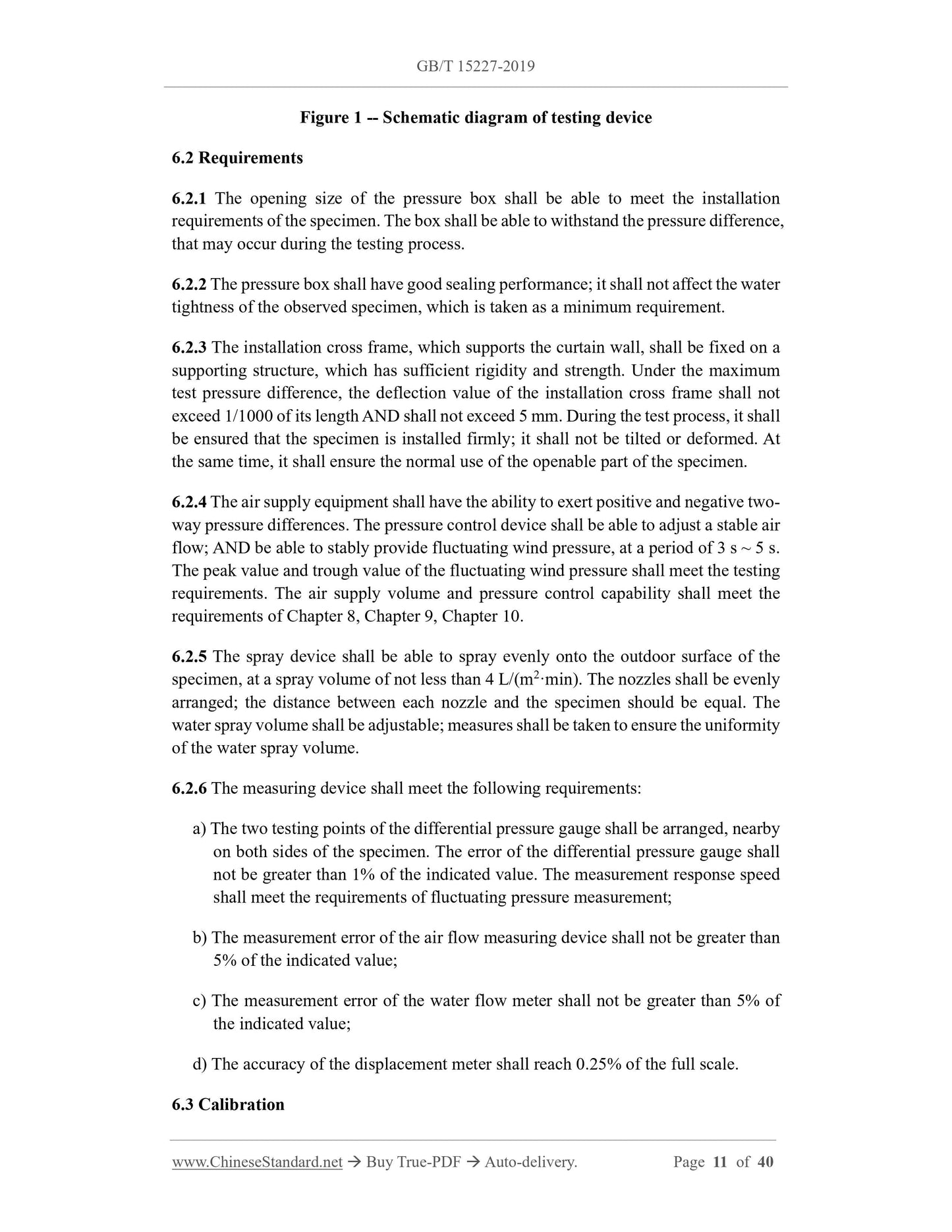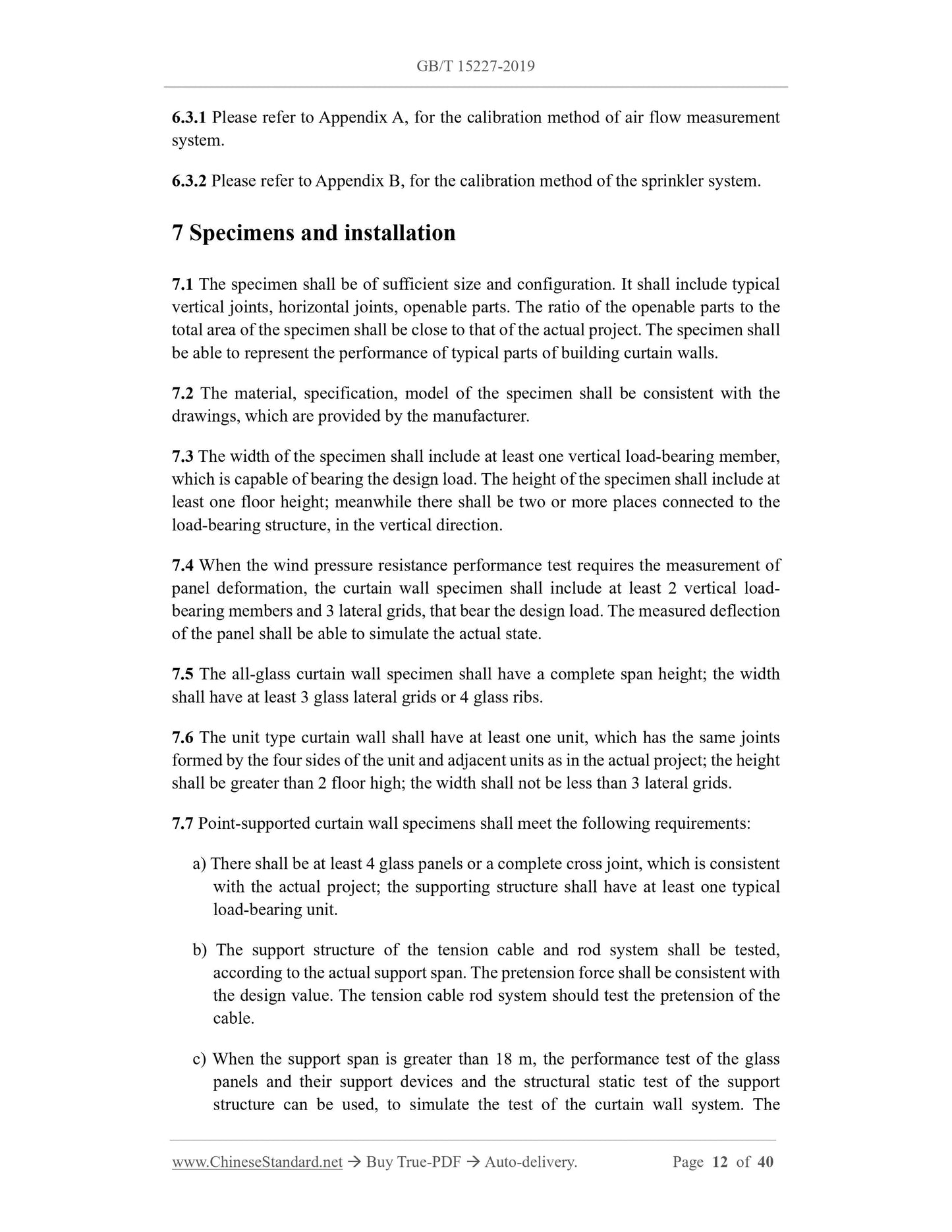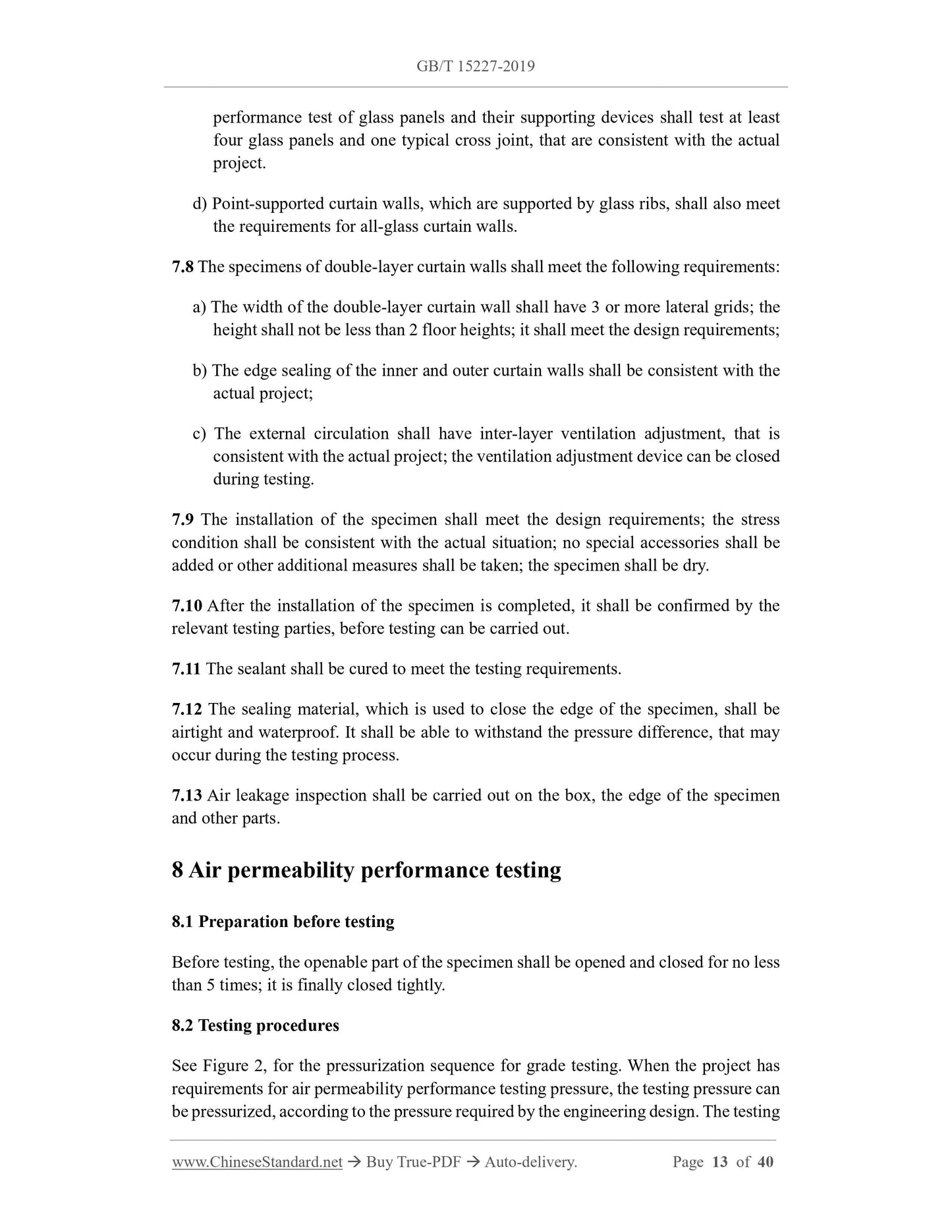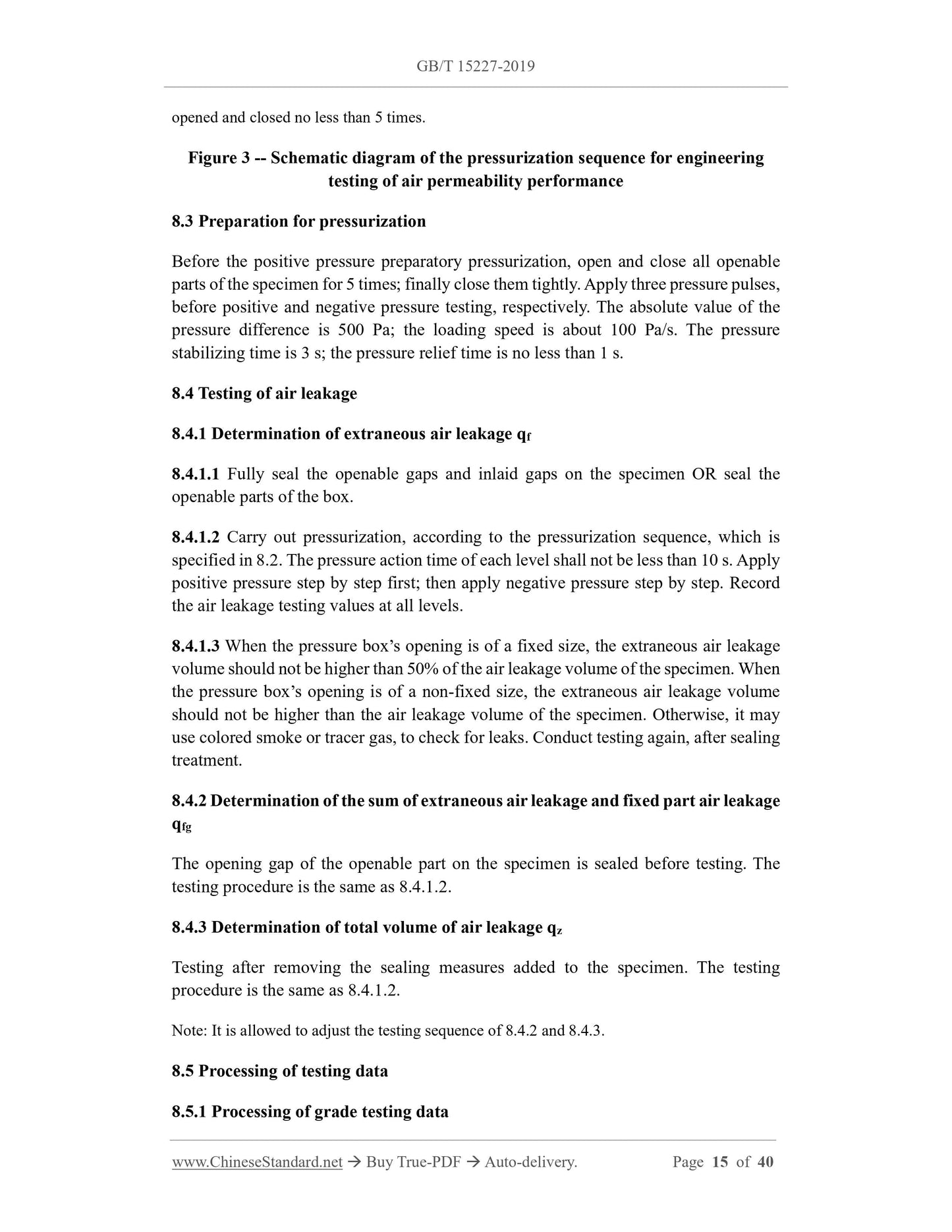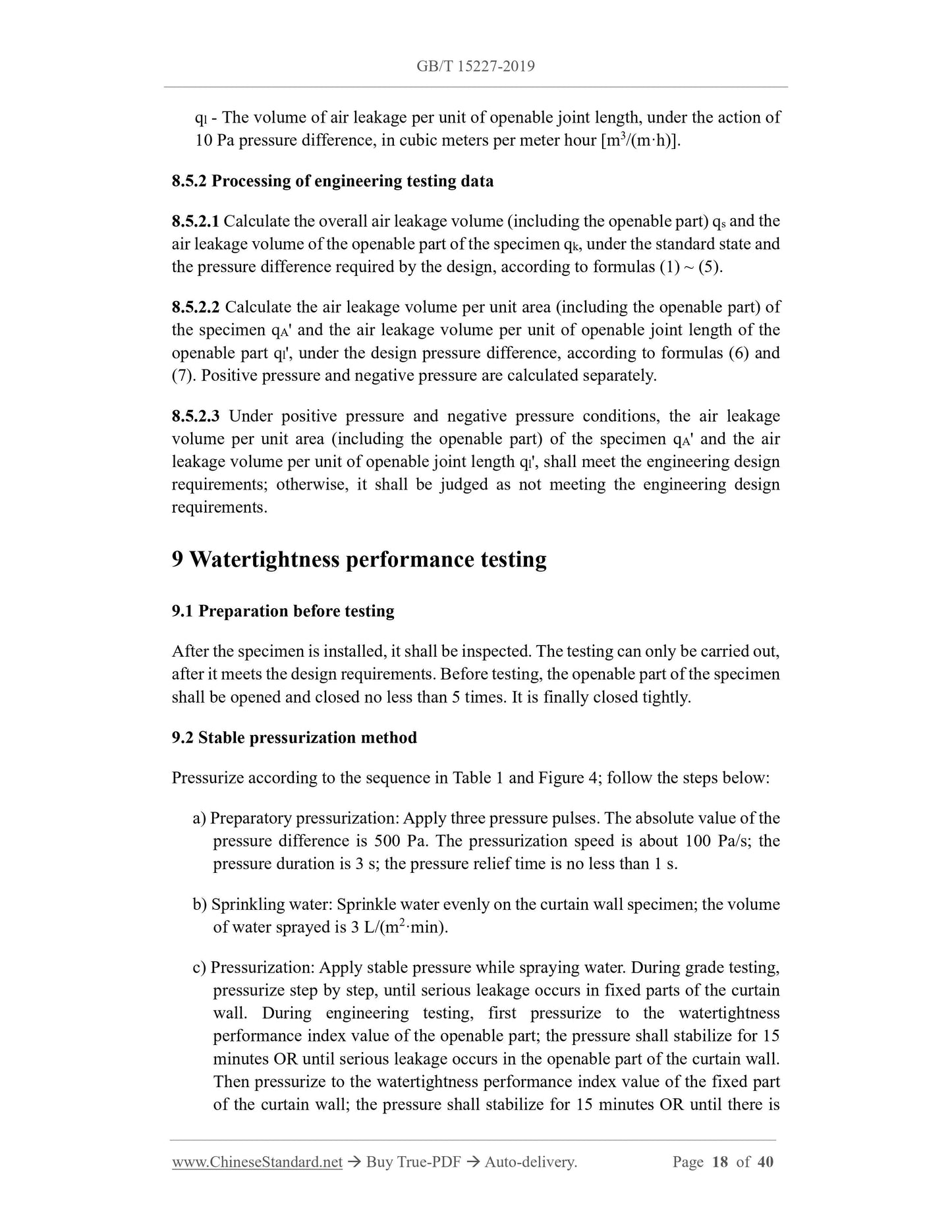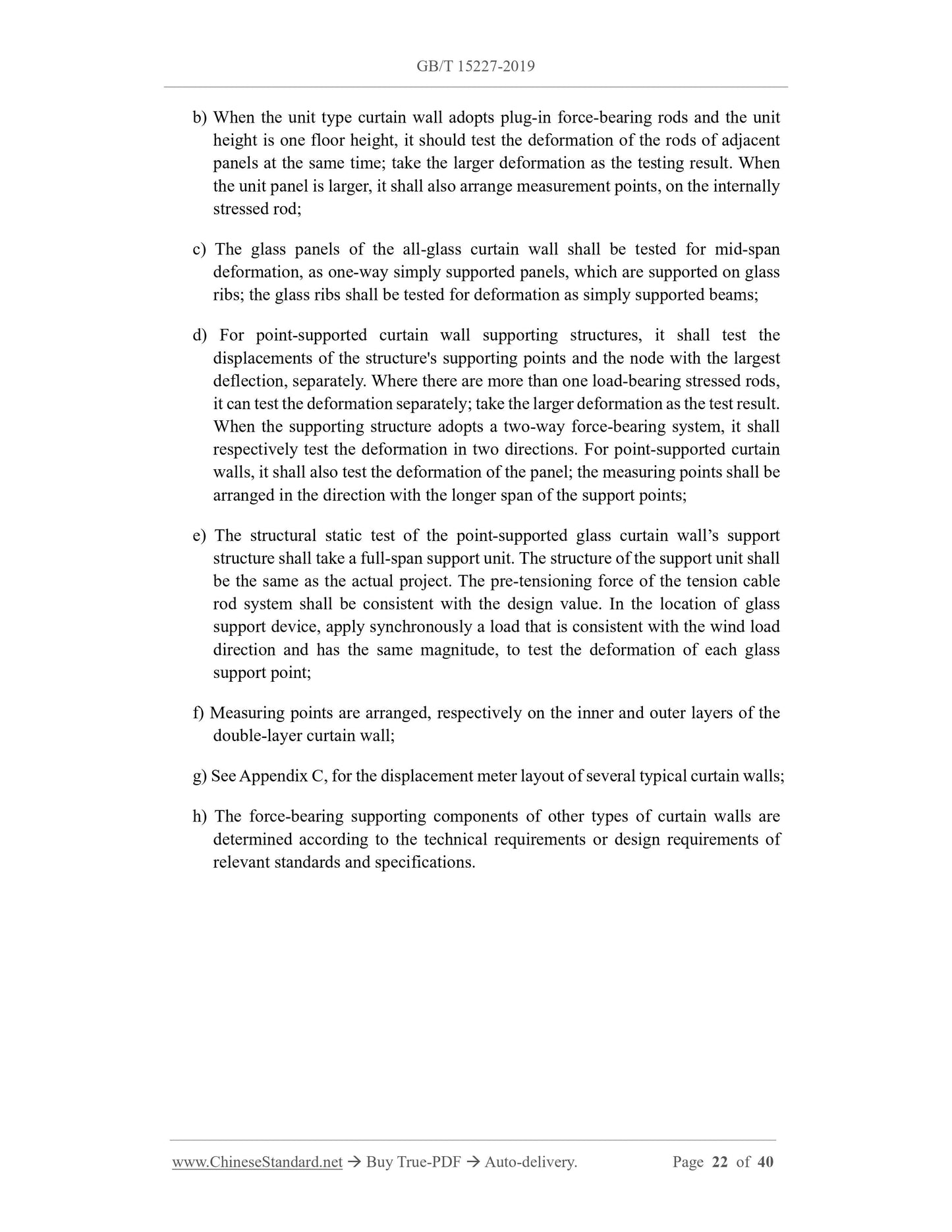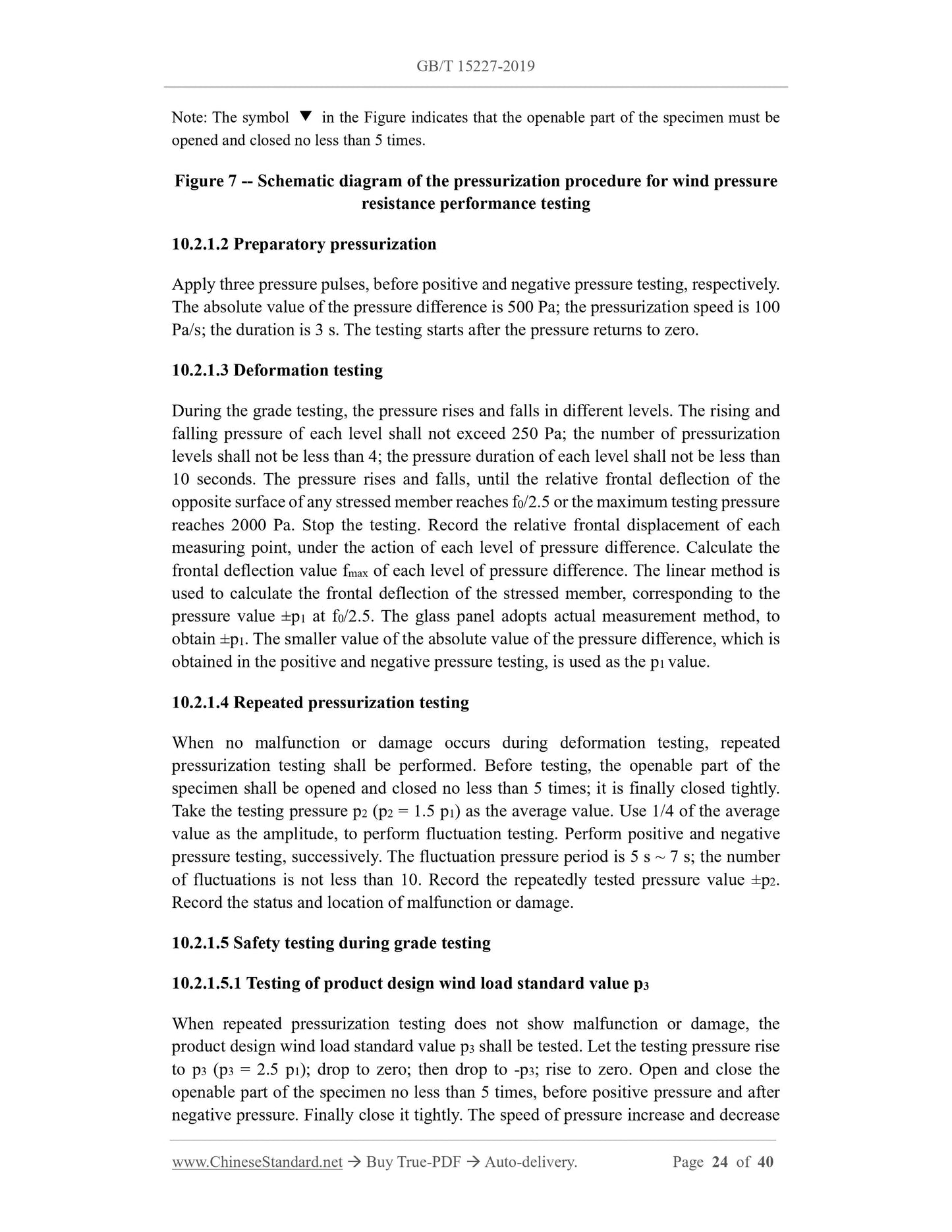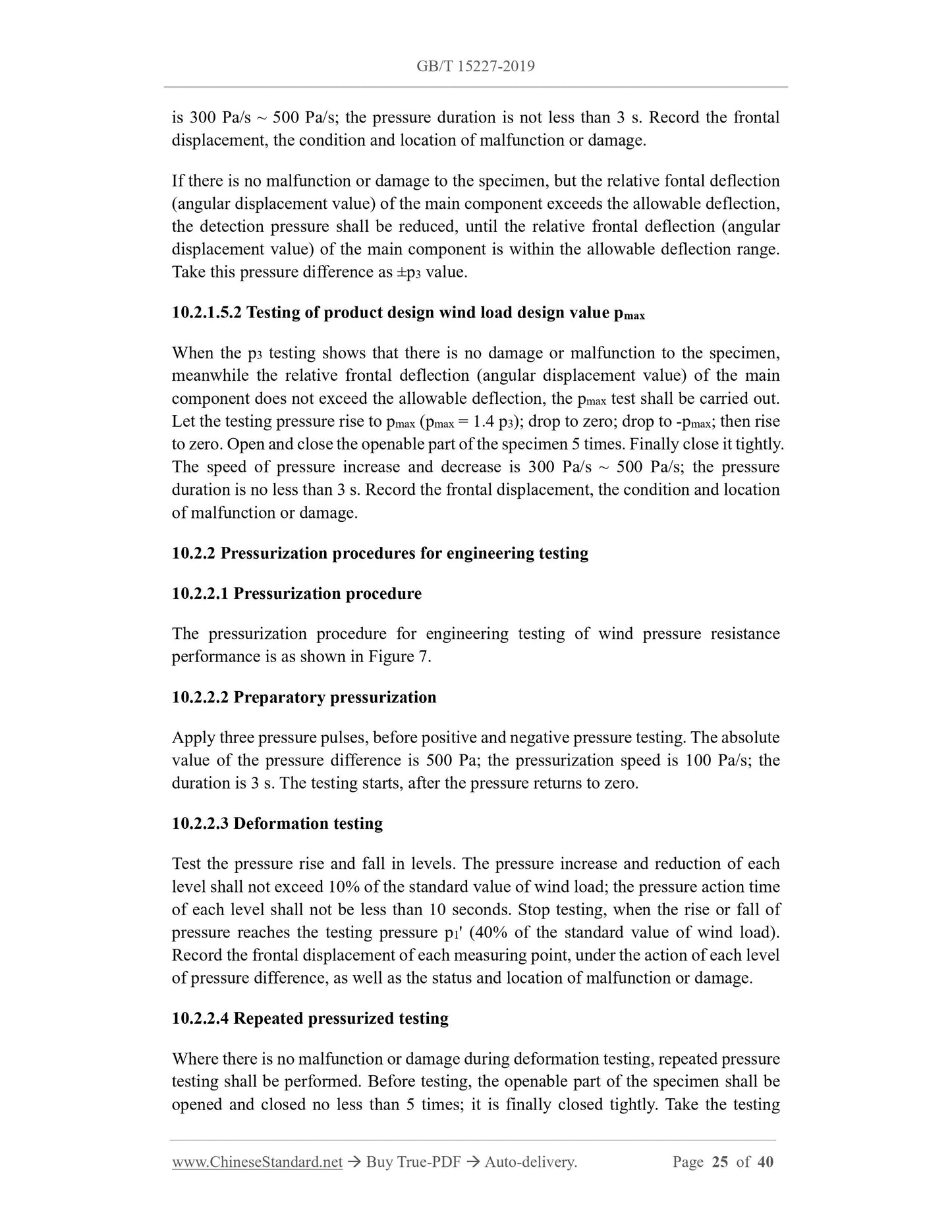1
/
of
12
www.ChineseStandard.us -- Field Test Asia Pte. Ltd.
GB/T 15227-2019 English PDF (GB/T15227-2019)
GB/T 15227-2019 English PDF (GB/T15227-2019)
Regular price
$445.00
Regular price
Sale price
$445.00
Unit price
/
per
Shipping calculated at checkout.
Couldn't load pickup availability
GB/T 15227-2019: Test method of air permeability, water tightness, wind load resistance performance for curtain walls
Delivery: 9 seconds. Download (and Email) true-PDF + Invoice.Get Quotation: Click GB/T 15227-2019 (Self-service in 1-minute)
Newer / historical versions: GB/T 15227-2019
Preview True-PDF
Scope
This standard specifies the terms and definitions, general requirements, testingprinciples, testing devices, specimens and installation, air permeability performance
testing, water tightness performance testing, wind pressure resistance performance
testing of building curtain walls, as well as the test reports.
This standard is applicable to laboratory testing of air permeability, water tightness,
wind pressure resistance of building curtain walls. The testing objects are limited to the
curtain wall specimen itself, as well as its connection structure with other structures.
Basic Data
| Standard ID | GB/T 15227-2019 (GB/T15227-2019) |
| Description (Translated English) | Test method of air permeability, water tightness, wind load resistance performance for curtain walls |
| Sector / Industry | National Standard (Recommended) |
| Classification of Chinese Standard | P32 |
| Classification of International Standard | 91.060.10 |
| Word Count Estimation | 30,386 |
| Date of Issue | 2019-12-10 |
| Date of Implementation | 2020-11-01 |
| Issuing agency(ies) | State Administration for Market Regulation, China National Standardization Administration |
Share
